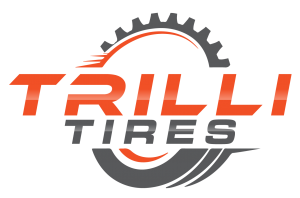Winter driving presents unique challenges, from icy roads to heavy snow and reduced visibility. One factor that can significantly affect safety and vehicle performance during the colder months is wheel alignment. Misaligned wheels can reduce control, increase tire wear, and compromise braking efficiency. Understanding the impact of misalignment on winter driving helps drivers make informed maintenance decisions and ensures a safer journey throughout the season.
What It Means for Wheels to Be Misaligned
Wheel misalignment occurs when the angles of your vehicle’s wheels are not set according to the manufacturer’s specifications. These angles include camber, caster, and toe, which affect how your tires contact the road. Misalignment can occur gradually over time due to normal driving or suddenly from hitting potholes, curbs, or rough terrain.
When wheels are misaligned, tires may not sit flat on the road, causing uneven wear and affecting handling. Misalignment is often unnoticed until it causes symptoms such as pulling to one side, vibrations, or unusual tire wear. Addressing misalignment before winter helps maintain proper vehicle control in challenging conditions.
Reduced Traction on Snowy or Icy Roads
Properly aligned wheels allow tires to maintain optimal contact with the road surface. In winter, when snow, ice, or slush can reduce traction, misaligned wheels exacerbate the problem. Tires that are not properly aligned may lose grip more easily, leading to sliding or difficulty stopping.
Ensuring your wheels are aligned before the onset of winter improves traction and reduces the likelihood of accidents on slippery roads. Alignment helps the tires work efficiently with other safety systems, such as anti-lock brakes and traction control.
Uneven Tire Wear and Shortened Lifespan
Misaligned wheels cause tires to wear unevenly. Certain areas of the tire may wear faster than others, creating bald spots or reducing tread depth. This uneven wear is particularly dangerous in winter, as tires with inconsistent tread struggle to channel snow and water, further reducing grip.
Regular wheel alignment helps maximize tire lifespan and ensures even wear. Maintaining healthy tires not only improves safety but also reduces the cost of replacing tires prematurely due to misalignment-related wear.
Impaired Handling and Vehicle Control
Winter driving demands precise control of your vehicle, especially on icy or slushy roads. Misaligned wheels can impair steering response and vehicle stability. Drivers may notice that the car pulls to one side, the steering wheel is off-center, or handling feels sluggish.
Correcting wheel alignment restores balanced handling, allowing drivers to respond more effectively in emergencies. Proper alignment helps maintain stability during turns, reduces understeer or oversteer, and ensures smoother driving on snow-covered streets.
Increased Fuel Consumption
Misaligned wheels not only affect safety and handling but also contribute to decreased fuel efficiency. When tires are not aligned properly, the vehicle experiences additional rolling resistance, which forces the engine to work harder.
By addressing misalignment, drivers can reduce unnecessary fuel consumption. This is particularly beneficial in winter when cold temperatures already impact engine efficiency, helping maintain optimal performance and saving on fuel costs.
Strain on Suspension and Steering Components
Driving with misaligned wheels puts extra stress on suspension and steering components. The uneven forces caused by misalignment can wear out shocks, struts, and tie rods faster than usual.
During winter, the added strain from driving on snow-covered or rough roads can exacerbate these issues. Regular wheel alignment helps preserve suspension and steering components, ensuring a smoother ride and avoiding costly repairs.
Signs Your Wheels Might Be Misaligned
Recognizing misalignment early is essential for winter driving safety. Common indicators include uneven tire wear, the vehicle pulling to one side, a crooked steering wheel when driving straight, and unusual vibrations. If any of these signs are present, it is crucial to have an alignment check before the winter season.
Addressing misalignment proactively allows drivers to enter winter with confidence, knowing their vehicle is prepared for slippery and hazardous conditions.
How to Prevent Misalignment During Winter
Preventing misalignment requires careful driving and regular maintenance. Avoiding potholes, curbs, and rough terrain whenever possible helps reduce the risk of sudden misalignment. Seasonal inspections, particularly before winter, are also important.
Professional wheel alignment services ensure that tires meet the manufacturer’s specifications, providing optimal performance on snow and ice. Maintaining proper alignment throughout winter reduces tire wear, improves handling, and enhances overall safety.
Benefits of Correct Alignment in Winter
Properly aligned wheels provide multiple benefits for winter driving. They ensure better traction, reduce stopping distances, improve vehicle stability, and promote even tire wear. Alignment also minimizes strain on suspension components and can contribute to better fuel efficiency.
Drivers with correctly aligned wheels experience smoother handling and greater confidence when navigating slippery roads, steep inclines, and tight turns. This makes winter driving less stressful and more predictable, reducing the risk of accidents.
Final Words
Misaligned wheels can have serious consequences for winter driving, affecting traction, handling, tire longevity, and fuel efficiency. Ensuring that your wheels are properly aligned before the cold season is a proactive step toward safer, more reliable driving. Regular maintenance and professional alignment checks allow drivers to navigate snow, ice, and slippery conditions with confidence.
For residents in Richmond Hill, TrilliTires offers expert wheel alignment services to ensure your vehicle is winter-ready. Schedule an appointment today to maintain optimal safety and performance this season.

